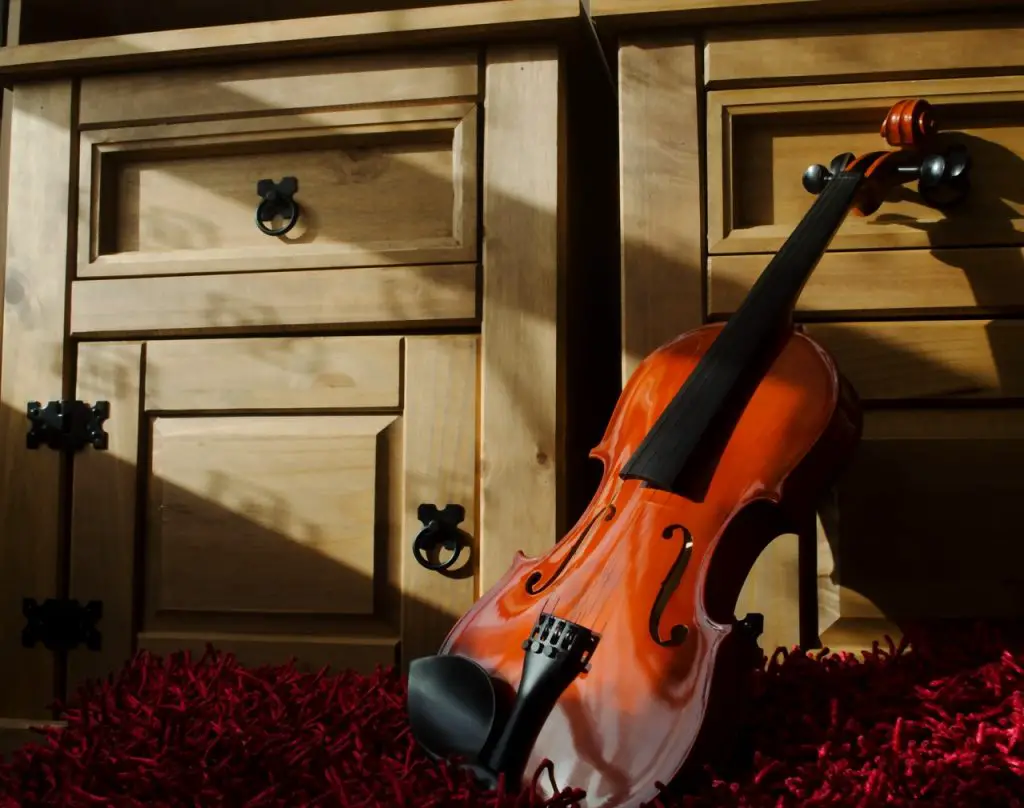
Harmony is the use of two or more musical notes to create a distinct sound. When played together, these different notes can complement each other and bring out unique qualities in both sounds. The word “harmony” comes from the Greek word harmonia which means “union of sounds.”
What is harmony in music?
Harmony in music is when two or more notes are played at the same time. Harmony is one of three components that make up music (the others being melody and rhythm).
Why is harmony important in music?
Harmony adds to the music’s complexity, depth, and richness. When we talk about harmony, we are describing the relationships between notes. Musicians use this to create intricate and beautiful arrangements.
Harmony is very important to music. Without it, music would be boring and dull. It adds depth to music and makes it more interesting for the listener.
What is harmony?
Harmony is the accompaniment of the main melody. It occurs any time two or more notes are played at the same time.
Writing music with solid and engaging harmonies is a vital skill for anyone who wants to create music.
Harmony can be simple or complex, depending on how many notes are used and how they are arranged. But no matter what, it always adds richness and depth to the music.
Harmony in music
Harmony is an idea that has been developing in music for a long time. Ancient music had very simple harmonies. Over time, musicians developed more complex ways of creating harmony.
Development of Harmony
Harmony really took off during the 16th century. Renaissance artists and musicians created new techniques and methods to create harmony.
Some of the most interesting examples of harmony can be found in classical music, right up to the present day.
Modern popular music borrows many of these ideas about harmony. Even the most common pop songs use harmonic ideas that developed with classical music.
Harmony applies to pitched instruments only. Non-pitched instruments, such as percussion, do not create harmonic sounds. For example, clapping and stomping at the same time won’t create harmony.
Types of Harmony
There are two main types of harmony: Dissonant and Consonant.
Dissonant harmony is jarring. It sounds like there are too many notes playing at the same time, but it’s very common in modern music. Dissonance creates tension and makes the listener feel uneasy. It can even sound like noise to the listener.
Consonant harmony sounds more pleasant and peaceful. Many modern genres of music, such as jazz and pop, use this technique to create a pleasing sound for listeners (including those who like dissonance). It’s easy to spot consonant harmonies because they sound smooth and cohesive.
When we mix dissonant and consonant harmony together, we can build tension and then release it. This creates variety in the music and keeps listeners engaged.
The character of different types of Harmony
So what harmonies sound a certain way? For example, some types of harmony will sound happy and bright. Other types of harmony will sound gloomy and dark.
Here’s why, it all has to do with the relationship between the notes. Specifically, the interval of space between each note. Music intervals are the distances between two notes. They are measured in terms of half-steps and whole-steps.
Types of musical intervals
These are the main types of intervals: minor, major, and perfect.
Minor intervals are made up of two half steps. Major intervals are made up of two whole steps. Perfect intervals are made up of two whole steps and one-half step.
When we hear these intervals it creates a certain mood or feeling. So if you play two notes at the same time with these intervals, it’ll also create this same impression. The type of interval between two notes will create a certain type of harmony (minor, major, or perfect).
For example, minor intervals create dissonant harmonies, while major intervals create consonant harmonies.
When we mix different types of intervals together, we get all sorts of interesting combinations. This is what creates variety in music and keeps listeners engaged.
The intervals between the notes also give the name to the types of scales musicians play. For example, a minor scale has minor intervals, while a major scale has major intervals.
By playing more minor intervals in our harmonies, we’ll get more minor-like dissonant sounds. By playing more major intervals, we’ll get a consonant sound.
What makes Harmony Simple or Complex?
The number of notes in each harmony will determine how complex it is. A harmony with two notes is simple. A harmony with three notes is more complex. A harmony with four or more notes is very complex.
In general, the more notes in a harmony, the more complex it will be. This doesn’t mean that all harmonies with lots of notes are complicated, but it’s something to consider when creating music.
The more notes in a harmony, the harder it is to hear each individual note. For example, if you have three or four instruments playing at once, each instrument can easily get lost among all of the other sounds.
This will cause some interesting effects in our music! But it also means there’s potential for things to go wrong very quickly.
Brilliant musicians are able to make complex harmonies sound very simple. Yet, if you were to listen closely, you could hear many different shades and colors in the music.
It all comes down to how well the musician can control each individual note and make it stand out. This is what makes harmony so interesting and complex!
What is the purpose of harmony in Music
You can build music through solid and engaging harmonies.
A harmonious chord is a chord where all of the notes in it are from the same scale. When they mix together, they produce an enjoyable sound. For the listener, the character of that chord is very clear and recognizable.
For example, a C Major chord sounds very happy and confident. Music that uses a lot of major chords sounds bright and cheerful.
If we were to create a song that uses many minor chords, it will sound dark and mysterious.
Harmonies can also be very complex, but a musician that is able to control the notes in each harmony well can make even a complicated chord sound simple and accessible.
When we explore the various characteristics of harmonies, it gives us an expanded musical vocabulary to express ourselves.
Harmony in Different Genres of Music
Pop Music Harmony
Pop music tends to use many major-sounding chords and intervals between notes. This creates a brighter and more cheery sound.
One technique that pop musicians use is to stack multiple major chords on top of each other. This creates a really thick and rich harmony that is very popular in pop music.
Pop music is often very simple, with a few catchy hooks and melodies. However, there are some pop songs that make use of more complex harmonies.
If we explore the history of pop music, there are some examples that stand out as very unique and creative. For example:
– The Beatles made use of many dissonant harmonies in their songs to give it a more raw sound. They also used complex Harmonic progressions which gave their melodies an interesting twist.
– Stevie Wonder is known for his amazing vocal harmonies. He often uses complex chord progressions and unusual intervals to create a really unique sound.
– Michael Jackson’s music is full of lush, beautiful harmonies. He often used major chords to give his songs a more positive feeling.
Rock Music Harmony
Rock music often uses minor intervals to create darker-sounding harmonies. Rock music also uses more dissonant harmonies than pop music. This is because rock musicians want their music to be aggressive and in your face.
Some of the most famous examples of rock harmony are in Led Zeppelin’s song “Stairway to Heaven.” This iconic song is full of dark, eerie minor chords that sound amazing together!
Nirvana’s Kurt Cobain made brilliant use of harmony by creating sparse chords on the guitar but singing notes that brought out eerie and dissonant harmonic overtones.
Metal music is often very dissonant and dark, making use of minor chords and dissonance. It can also be very complex and very sophisticated rhythmically. Although it can be very dissonant, some metal musicians use some very beautiful harmonies to create an epic sound.
Jazz Music Harmony
Jazz harmony is often very complex, with many different notes played at the same time. In this sense, jazz harmonies are similar to those found in classical music.
Jazz musicians like to use complex harmonies. However, what makes a jazz musician skilled is to be able to create complex music that the listener can follow.
The important thing with jazz is that the musician has a good understanding of how each individual note sounds and feels. They will often spend time improvising around different musical ideas before finally settling on one particular harmony or melody line.
Fans of jazz music tend to be more sophisticated and musically knowledgeable. This is because jazz music has a very complex and interesting harmonic structure that rewards the listener who takes the time to really listen carefully.
Movie Soundtracks and Harmony
Movie soundtracks are often a great place to find interesting harmonies. This is because movie soundtracks need to be able to convey the mood and feeling of the movie.
Movie soundtracks are able to borrow all of the harmonic ideas from classical music, jazz, rock, and pop music. This means that the composer has a lot of flexibility when it comes to creating interesting harmonies.
One great example of this is in the movie “The Dark Knight.” The soundtrack was written by Hans Zimmer and he made use of all sorts of different harmonic ideas to create an amazing listening experience.
The music for “Harry Potter” is filled with beautiful harmonies that help to convey the magical feeling of the movies. Different types of harmony can create different shades and feelings.
Harmony helps you to write better songs
Music is one of the most powerful forces on earth. It can make us happy, sad, excited, and any number of other emotions. But music isn’t just about our own personal reaction to it – there are also the reactions that come from others in response to what we’re hearing.
Having an understanding of harmony and being able to use it in your own music is a great way to create something that will touch people’s hearts and stay with them for a long time. Harmony is one of the most important elements in music, and it’s a skill that every musician should strive to learn.
